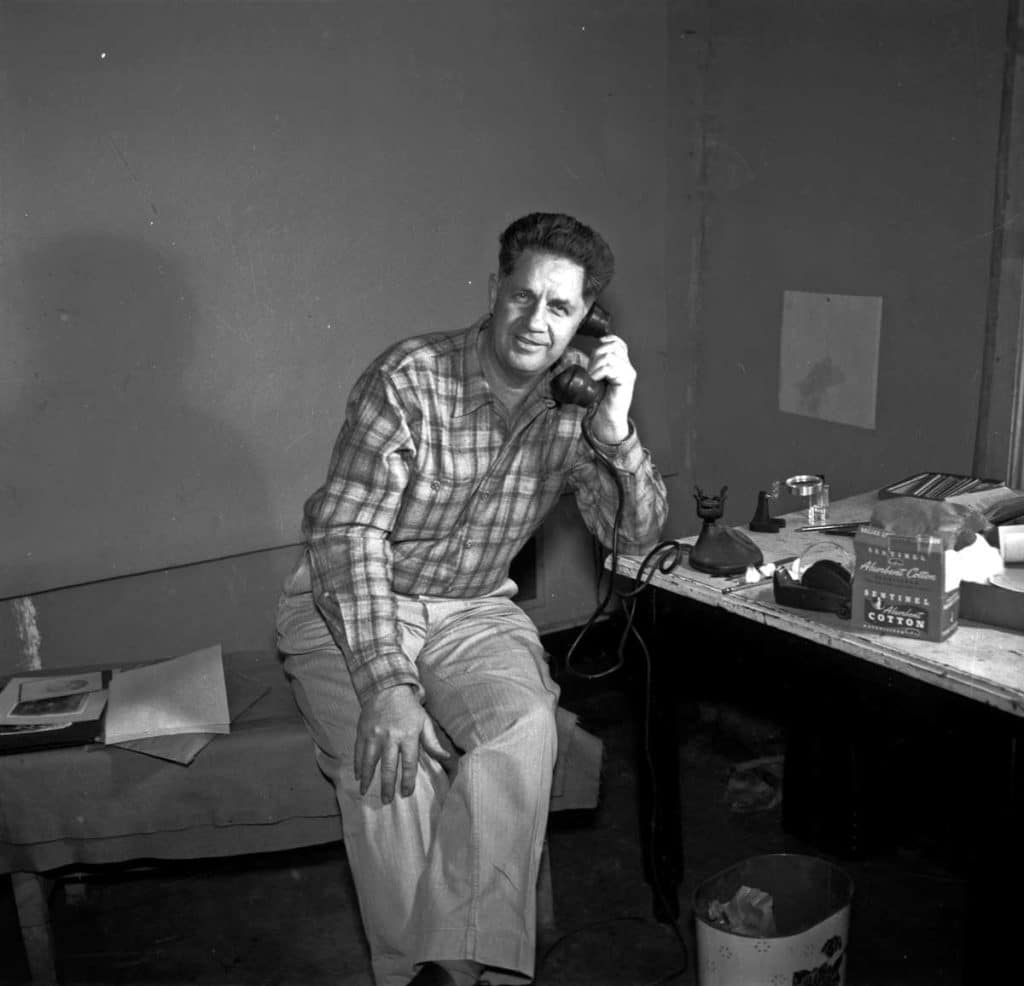Kendall Webb, born in West Virginia, moved to Park City in 1946. Prior to that, he worked as a steam fitter at Pearl Harbor, working on the base in the early 1940s. He also started a Boy Scout troop there and happened to be on a trip with his troop when Japanese planes attacked Pearl Harbor. He used to tell a story about planes flying low overhead during the bus ride to their destination, one spraying fire, kicking up dust along the roadside. After the attack he moved back to the continental U.S. and worked in defense industries in Arizona until WWII ended, after which he moved to Utah.
Webb and partner Murri Hair formed a photography studio, Valley Studio, in Midway, but found the rent to be too high. They decided to move to Park City, renting space at 401 Main. They kept the name Valley Studio and began consistently documenting Park City events, especially related to Park City High School and the Kiwanis Club. For several years, the studio was the only new business to arrive on Main Street due to the economic hardships in town. Hair quit the business after a short while and gave his part of the business to Webb. Webb also began collecting historic photographs of Park City, making them available to the public.
Webb’s obituary noted that he became familiar with the mountains, mines, and country around Park City by spending hours walking around or driving his Jeep. It noted that he eventually knew the “names and locations of even the most obscure mining claim” and could also “identify every wildflower and tree by name.”
These skills most certainly helped Webb during his time as a Scout Master in Park City. Webb led a troop for the Boy Scouts (no. 162) through the War Memorial Building from 1947 to 1968, re-popularizing scouting in Park City: in time the Elks Club started a troop (no. 448) and the LDS Ward reinstated a troop (no. 169) that had failed to catch on before Webb arrived. Webb led trips for the Park City troops all over the West. Webb often photographed troop trips and events. One of his Scouts, Bob Mawhinney, achieved the honor of becoming the youngest Scout in America to become an Eagle Scout (the record was later broken).
Webb was also an active member of the Kiwanis Club of Park City and the LDS Church, both organizations which he photographed often. At the time of his death, Webb was serving as secretary-treasurer for the Kiwanis Club.

Credit: Park City Historical Society & Museum, Kendall Webb Collection
In 1953 Webb moved his studio to 523 Main, the old Taylor building. Later, in the mid-1960s, Webb had a building built on the lot immediately to the north of 523 Main. The new building is now the 7-11. Webb rented the front of the building to dentist Dr. John O. Lambert and used the back as a studio. Webb moved his studio again to 573 Main, where he would work until he developed lung cancer in 1975 and sold the studio to photographer Nick Nass, with the promise that Nass keep it open.
Webb was noted for having a twang, as he was from West Virginia, calling his cameras “camrys”. He was a self-taught photographer, and although he did not make much from being one – on his tax report every year, he wrote “Didn’t make enough” instead of supplying his income – it was his passion. Most of Webb’s clientele were couples getting married, Park City High School, and local families wanting portraits.
Kendall Webb died on June 19, 1975 from lung cancer, likely caused by his work as a steam fitter at Pearl Harbor. He was buried in a family plot in Huntington, West Virginia. For many years, his collection of photographs and historic photographs remained in the studio he sold to Nick Nass, who renamed it Main Street Photography. Nass later sold the business (including Kendall Webb’s negatives and prints) and rented the studio space to Jim Maire and Colin Kelly. In 2000, Maire and Kelly donated Webb’s collection to the Park City Historical Society & Museum, though his collection of historical photographs remained with the studio to sell copy prints. The Main Street Photographer went out of business in 2001, leading Nass to donate Webb’s historic photograph collection as well.
The Museum is currently utilizing a grant from the Utah State Historical Records Advisory Board (USHRAB) to digitize a portion of Webb’s thousands of negatives and prints.